Choosing the Ideal Paddleboard Size for Your Needs


Intro
Selecting the right paddleboard is not just a matter of picking a color or a brand. The choice you make can affect your comfort, performance, and even safety while enjoying time on the water. Whether you’re an experienced paddler or someone just dipping their toes into the sport, understanding the nuances of board size and shape can significantly impact your overall experience. This article aims to lift the veil on the complicated world of paddleboard sizing, breaking down essential factors to consider that will help you make an informed decision.
With an abundance of paddleboards available, each boasting different features, the process can seem overwhelming at first. However, the adventure of selecting the perfect board needn’t feel like climbing a mountain. By focusing on user weight, skill level, and intended water conditions, you can align your choice with your specific needs. A well-sized paddleboard will not only enhance stability but will also contribute to smoother maneuvers and increased enjoyment.
As we delve into this guide, you will gain valuable insights into the various factors that dictate paddleboard performance, allowing you to choose wisely based on your individual requirements. Let's get started by examining the crucial aspects of gear and equipment.
Understanding Paddleboard Dynamics
When it comes to paddleboarding, understanding the dynamics behind paddleboards is essential. It’s like trying to hit the bullseye without knowing how to aim. This section serves as the backbone for anyone looking to choose the right size paddleboard. Factors like stability, speed, and maneuverability all hinge on these dynamics. The right size board will not only enhance your performance but also elevate your experience on the water.
Different boards are designed for distinct purposes. If you want to race, a slender board might suit you better, while a wider, more buoyant design could cater to leisurely activities on flat waters. Knowing these dynamics means you'll choose wisely, saving you a headache further down the line. An informed decision can lead to more enjoyable days in the sun—or at least avoiding a few spills in the water.
Defining Paddleboarding
Paddleboarding combines elements of surfing and kayaking but with its own unique twist. Simply put, paddleboarding involves standing on a board while using a paddle to navigate across water. What many may not realize is that this seemingly straightforward activity comes with a variety of board shapes and sizes, each tailored for specific waters and skill levels. The experience can range from tranquil gliding on lakes to navigating through choppy ocean waves, adding layers of fun—and challenge—to the sport.
Key Terminology in Paddleboarding
To dive deeper into paddleboarding, we have to know the lingo. Here are three key terms that are fundamental to selecting the right paddleboard for your needs:
Length
Length is one of the primary characteristics that can greatly impact your paddleboarding experience. A longer board typically glides better and is faster, making it an attractive option for those looking to paddle longer distances. Generally, boards range from 8 to 14 feet. However, they don’t come without trade-offs; longer boards may be more challenging to maneuver in tight spaces. Think of it like driving a limousine versus a compact car—both have their perks, depending on the roads ahead.
Width
When we talk about width, we're basically discussing stability. A wider board offers a more stable platform, which can be particularly beneficial for beginners or those practicing yoga on the water. Boards usually span from 26 inches to over 34 inches in width. But don’t forget, a wider board may sacrifice speed for that stability. If you're in calm waters, wide might feel comfy, yet in choppy conditions, it might slow you down. It’s a balancing act, much like choosing between comfort and agility in footwear.
Thickness
Thickness relates to how buoyant the board is. A thicker board tends to float better, accommodating heavier weights more effectively. The general thickness of paddleboards can vary between 4 to 6 inches. For example, if you're planning to carry gear on a day trip, a thicker board might be the better choice. Yet, while thickness can elevate buoyancy, it can also influence the board's overall weight—something to consider if you'll be lugging it to the water.
Paddleboard performance hinges on dimensions. Choose wisely to match your style and activities.
Factors Influencing Paddleboard Size
When selecting a paddleboard, understanding the factors influencing its size is paramount. Size does not merely dictate how well a board performs; it also plays a critical role in the user's overall experience on the water. The right size affects stability, speed, and maneuverability, significantly impacting your enjoyment and effectiveness while paddling. Whether you're a seasoned pro or just dipping your toes into this exhilarating sport, knowing what to consider will make all the difference.
User Weight Considerations
The weight of the user is one of the most crucial factors when choosing a paddleboard. This isn't just about how much you weigh; it's about how that weight interacts with the specific dimensions of the board. Each board has a weight limit, and exceeding that can lead to an unstable ride. For instance, heavier users might find that a wider board not only provides more stability but also handles their weight better. Conversely, a lighter individual might prefer something more narrow to achieve better speed on the water.
It’s wise to check the manufacturer's specifications regarding weight capacity; however, a general guideline would be that a larger board accommodates greater weight but sacrifices speed and maneuvrability. Therefore, matching a board's dimensions to the user's weight is essential to ensure not only comfort but safety as well.
Skill Level Assessment
Your skill level also plays a significant role in your paddleboard selection. Beginners often benefit from wider and more stable boards, which help reduce the chances of an unexpected plunge into the water. As one grows comfortable on the board, transitioning to a narrower design that offers speed becomes a possibility. Intermediate and advanced paddlers can better handle the demands of narrower boards, which excel in performance but require better balance and sometimes experience to master.
The statement, "You can’t teach old dogs new tricks" does not hold true in the paddleboarding world. Users can learn and enhance their skill set with the right board that evolves alongside their journey. Hence, recognizing where you stand in terms of skill is pivotal for a satisfying experience out on the water.
Activity Type and Environment
Flatwater vs. Wave Riding
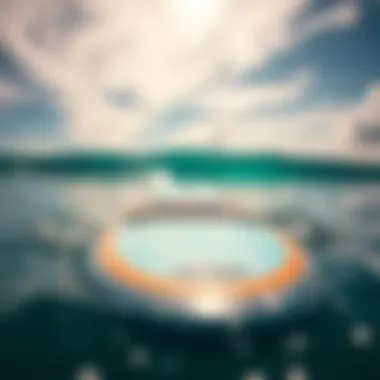
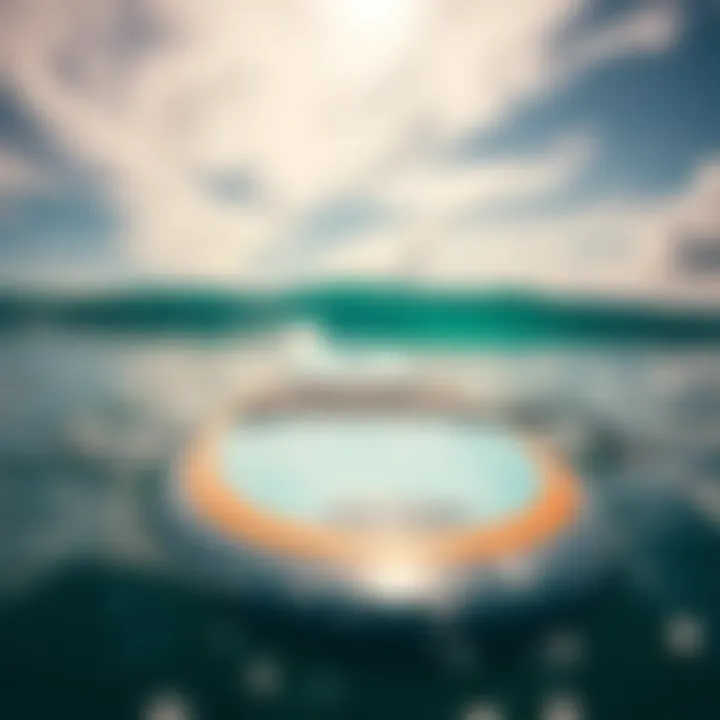
When it comes to paddleboarding, the type of activities you plan to partake in will largely dictate board size and design. Flatwater paddling—the kind often enjoyed on lakes or calm rivers—demands a different board than what you would use for wave riding in the ocean. In flatwater conditions, the priority lies in stability and speed. Hence, a longer, wider board is a popular choice. This enables smooth gliding through calm conditions, accommodating leisurely paddle journeys or exploring serene waters.
On the other hand, wave riding requires a board that can handle the unpredictability of ocean swells. Here, shorter boards are favored as they allow for greater maneuverability and quick turns as well as better wave catching abilities. While they may sacrifice speed for agility, they admirable suit the dynamic nature of ocean conditions.
The choice between flatwater and wave riding isn't merely one of preference; it’s about aligning your paddleboarding goals with the characteristics of the board you select.
Long Distance Paddling vs. Surfing
When considering long distance paddling vs. surfing, your choice of board becomes even more specific. Long-distance paddling often calls for a sleek and long design. These boards are optimized for tracking straight and maintaining momentum over extended distances, allowing paddlers to conserve energy and improve efficiency—a vital feature for those looking to explore vast waterways.
Conversely, surfing boards typically are shorter with a slightly rockier shape, designed for quick paddling and rapid turns. In the world of ocean surfing, quick responsiveness can be the difference between catching a wave and watching it roll away. So, you see, knowing the difference in paddling styles not only shapes your experience but also enhances your skills on the water.
In summary, the factors influencing paddleboard size encompass considerations of user weight, skill levels, and activity types, with each aspect providing insight into finding the board best suited for your needs. The terrain, along with your intended usage, will ultimately guide you towards selecting a paddleboard that supports your ambitions, all while ensuring you have a smooth sail.
Paddleboard Dimensions Explained
Understanding paddleboard dimensions is foundational when selecting the right board for your needs. The length, width, and thickness significantly affect the performance, stability, and overall experience on the water. Knowing the specifications can help you make an informed choice that aligns with your activity type, skill level, and personal preferences.
When every inch and curve of a paddleboard matters, it's like trying to find the right pair of shoes, where just a small difference can change comfort and performance. The right dimensions can enhance your maneuverability, glide through water more efficiently, or provide stability, depending on what you seek. Grasping the nuances of these measurements means you not only invest in a board but also elevate your experience on the water.
Length: Pros and Cons
Length makes a world of difference. Longer paddleboards, typically over twelve feet, cater to speed and efficiency. They glide smoother across flat waters and are favored by those who enjoy long-distance paddling. More length usually means increased tracking, which is the ability to go straight without frequent adjustments. However, it can come at the cost of maneuverability.
- Pros of Long Boards:
- Cons of Long Boards:
- Better for Distance: A longer board can travel farther with each stroke.
- Enhanced Tracking: Keeps a straight course, which is ideal for calm lakes or rivers.
- Less Agile: Harder to turn quickly, making it less suitable for technical waters or wave riding.
Conversely, shorter boards, often below ten feet, excel in agility but compromise on distance. This makes them ideal for surfing or navigating confined spaces, yet they require more effort to maintain speed over longer durations. Thus, understanding your desired balance between speed and maneuverability is essential when considering board length.
Width: Stability vs. Speed
Width plays a crucial role in the balance between stability and speed. Wider boards provide a sense of security, especially for beginners. They have a more stable platform, which can enhance confidence while paddling and minimize the chance of tipping over. On the flip side, there’s a trade-off: wider boards can be slower and less efficient in the water.
- Pros of Wide Boards:
- Cons of Wide Boards:
- Improved Stability: Great for those who prioritize comfort, such as beginners or yoga enthusiasts.
- Better Load Capacity: Often allows more gear or weight without compromising performance.
- Reduced Speed: Requires more effort to paddle, as they displace more water.
Narrower boards, on the other hand, slice through water swiftly. They're favored in racing and are more responsive, which can enhance performance. However, less width can lead to an unsteady feeling, particularly for less experienced users. The key here is to ask yourself: What’s more important to you—supporting a relaxed paddle or maximizing speed?
Thickness and its Impact
Thickness is often the unsung hero of paddleboard performance. Generally, thicker boards offer more buoyancy, meaning they can support heavier riders or more equipment without sinking. This additional buoyancy translates into stability, especially beneficial for those starting out. However, increased thickness can also result in a loss of speed, as a mostly flat board can slide through water more efficiently than a thicker design.
- Advantages of Thicker Boards:
- Disadvantages of Thicker Boards:
- Greater Buoyancy: Keeps the rider on the surface, useful for various water conditions.
- Stability for Beginners: Reduces the chances of tipping over, which can boost confidence.
- Reduced Glide: Can create more drag, which can slow you down.
When figuring out the right thickness for your paddleboard, consider not just your weight but how you plan to use your board. Will you be navigating calm waters, or are you looking to take on challenging waves? Each thickness has its place, and understanding this helps in selecting the perfect fit for your intended experience.
In essence, knowing how length, width, and thickness interact is crucial. Picking the right size paddleboard tailored to your unique preferences and activities will give you an edge when you're out on the water, allowing you to enjoy everything from a peaceful glide to an exhilarating ride.

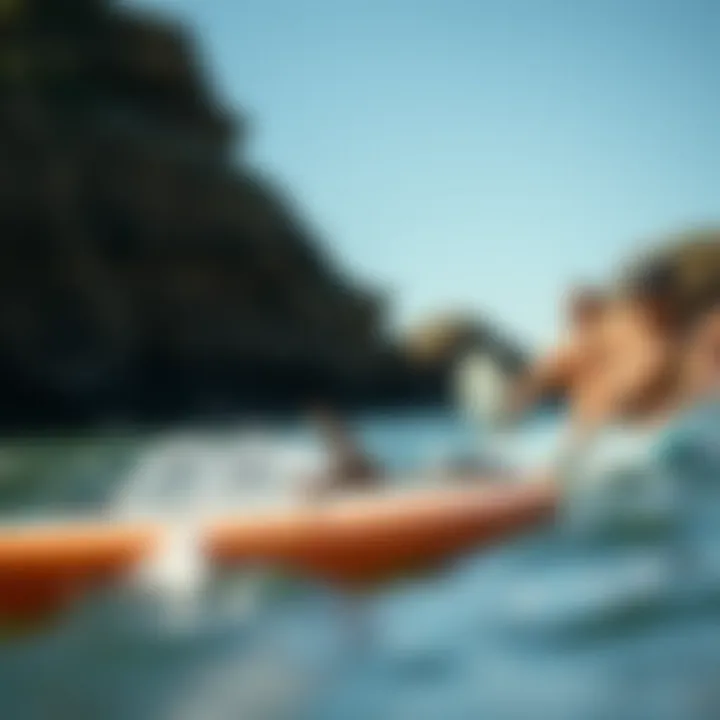
Selecting the Right Size for Specific Activities
Choosing the right size paddleboard is not merely an exercise in aesthetics or preference; it can dramatically impact your experience on the water. Different activities demand unique characteristics from a paddleboard. The size, shape, and construction of the board dictate how it performs across different environments, which is critical knowledge for anyone looking to optimize their time on the water. Whether you're going for a leisurely paddle on calm lakes or aiming to catch some serious waves, understanding these nuances can make all the difference.
Recreational Use
When it comes to recreational paddleboarding, the foremost consideration is comfort and stability. A board that’s too narrow or light might send you wrestling the waves instead of gliding gracefully across them. For flatwater exploration or casual outings, a longer, wider board often fits the bill. Boards that are 10 to 12 feet long usually offer increased stability, which makes them ideal for those who may be less experienced or carrying extra gear.
Key Features for Recreational Boards:
- Width: Aim for a width of at least 30 inches to maximize stability, especially for beginners.
- Weight Capacity: Always check the board's weight capacity; this ensures safety and performance, particularly if you're bringing along a friend or a cooler.
- Volume: Look at the volume measurement as it impacts buoyancy; higher volume translates to a more stable ride.
As a general rule of thumb, if the board feels solid beneath your feet and you don’t feel like you’re about to take a swim any minute, you are likely on the right track.
Competitive Paddling
Switching gears to competitive paddling, the stakes get higher. In this scenario, speed and performance are king. Here, precision in sizing directly ties to your success on the water. Most competitive boards are designed long and slender, generally ranging from 12'6" to 14'. This design not only cuts through water more efficiently but also helps in maintaining a straighter line, reducing drag.
Considerations for Competitive Boards:
- Length: The longer the board, the less resistance you’ll face while paddling.
- Narrowness: A width of around 25-28 inches improves speed, though it requires more skill to balance.
- Shape: Look for a pointed nose; this design helps slice through water and improve tracking.
Regardless of your competitive level, selecting a board that meets the competitive standard is essential. Getting these dimensions right promotes endurance, letting you slice through the course like a hot knife through butter.
Yoga on a Paddleboard
Yoga on a paddleboard marries two disciplines, necessitating a mindful approach to board selection. It’s important to consider stability but also how much space you’ll need for various poses. For paddleboard yoga, boards that are wider and longer can accommodate your flow without the constant worry of tipping over. Boards in the 10'6" to 12' range usually provide an excellent platform, giving you enough area to practice your downward dog without feeling cramped.
Best Practices for Yoga Paddleboards:
- Width: A minimum of 32 inches often grants a sturdier foundation, reducing the chance of inadvertent splashes.
- Thickness: Thicker boards tend to have added volume which can help with buoyancy during your poses.
- Material: Consider inflatable paddleboards; they tend to offer good grip, flexibility, and when inflated properly, can provide a stable surface.
In summary, when it comes to paddleboarding, each activity commands specific sizing considerations. Taking the time to reflect on your specific needs will enhance your enjoyment and safety while paddling. Don't hesitate to try multiple boards until you find the perfect fit for your intended use.
Always remember, a board's performance can make or break your experience. So, giving this task the proper attention will pay dividends in your water endeavors.
For more insights and explorations into paddleboarding, visit resources like Reddit or Wikipedia for a deeper dive into the subject.
Common Mistakes in Size Selection
Selecting a paddleboard is no small feat. A common pitfall enthusiasts face is misjudging the appropriate size. While the excitement of purchasing a board might overshadow caution, it’s crucial to approach this choice with deliberation. Getting the right size isn't just about personal comfort; it influences your entire experience on the water, including stability, maneuverability, and overall performance. Here, we delve into three primary mistakes that paddlers often make, giving you insight to avoid these blunders.
Overlooking User Weight
Weight plays a monumental role in determining the right paddleboard size. Many paddleboarders mistakenly believe that any board will suffice for their weight and skill level. However, an overlooked factor is the board's weight limit.
- Skimping on board capacity can lead to suboptimal performance, causing the board to sit lower in the water. You might feel sluggish or even struggle to paddle effectively if the board doesn’t displace enough water for your weight.
- For example, if someone weighing 250 pounds chooses a board designed for lighter users, they could run into stability issues.
The dimensions of the board must correspond to the user’s weight category, ensuring that the paddler not only floats but also enjoys an effortless glide across the waves.
Ignoring Skill Level
Another blunder paddlers often commit is ignoring their skill level. After all, the learning curve with paddleboarding can be steep, and the wrong board choice can add unnecessary challenges.
New paddlers might be tempted to try out a sleek racing board, thinking it’ll make them look advanced, but it might backfire.
- Beginners generally benefit from wider and more stable boards that provide greater balance. Choosing a board that aligns with your experience can make a world of difference.
- Conversely, more experienced paddlers seeking performance might disregard the need for a narrower board that offers speed and agility, underestimating how it can impact handling during a swift descent through rapids.
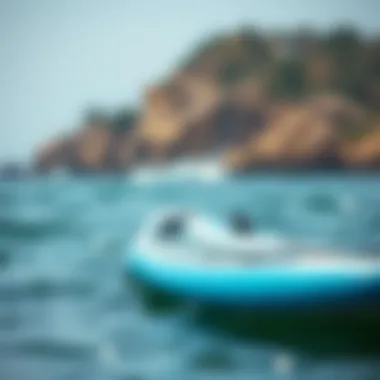
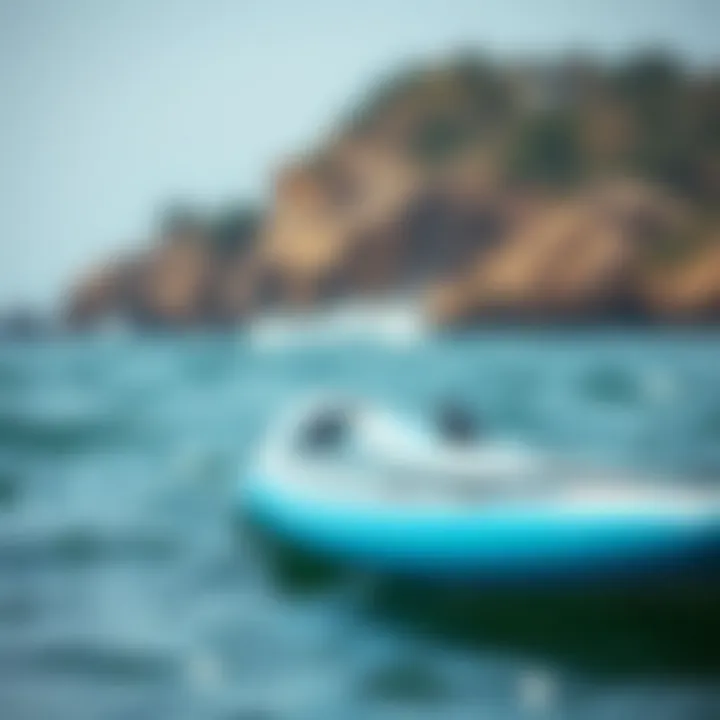
Therefore, an apt alignment between skill level and board design is paramount for both enjoyment and safety.
Neglecting Intended Use
Paddleboarding is as diverse as the environments paddlers explore, be it serene lakes, bustling rivers, or robust ocean waves. Many paddlers forget to consider the specific activities they wish to engage in, leading to poor choices in board selection.
A board designed for yoga is not the same as one intended for racing.
- When selecting a board, ask yourself: "Will I be paddle surfing, enjoying leisurely afternoons on a flat lake, or competing in races?" Consideration of your intended use sharply informs the choice of board length, width, and thickness.
- Additionally, neglecting the type of water conditions can prove hazardous. What works well in calm waters might not fare the same in choppy seas.
"Proper board selection is not just a theoretical exercise. It's about matching your aspirations with the physics of paddleboarding."
Ending
Steering clear of these common mistakes requires a blend of self-awareness and strategic thinking. Just like any sport, paddleboarding is intricately tied to the gear you use. By considering user weight, acknowledging skill level, and thinking about your specific paddleboarding activities, you set yourself up for an enhanced experience on the water. Choosing wisely now can lead to countless sunny days spent gliding through the waves with confidence.
Testing and Personal Adjustment
When it comes to paddleboarding, it’s not just about picking a board and hitting the waves. Testing and personal adjustment play crucial roles in ensuring you have an enjoyable experience on the water. Each paddler’s needs and preferences can vary significantly based on various factors, like body type, paddling style, and the conditions you’re navigating.
Taking the time to test different boards can reveal surprising truths about your personal fit. It’s one thing to read specifications on paper, but quite another to see how they feel underneath your feet. Whether you’re taking a leisurely stroll across a calm lake or catching waves at your local surf spot, the right board size and shape can make a world of difference in your performance and enjoyment.
Benefits of Testing Different Boards:
- Finding Your Balance: It’s essential to identify how each board reacts to your weight and movements. A board that feels stable in calm waters may not behave the same way in current or choppy waves.
- Gauging Comfort: Size matters. A board that is too small can feel tippy, while one that is too large may not be responsive to your commands. Testing enables you to find that sweet spot.
- Customizing for Your Style: Every paddler has their approach. Whether you lean more towards speed or relaxation, testing multiple boards can help unveil your paddling style and the optimal size for it.
Trialing Different Boards
Trialing different paddleboards is akin to a dress rehearsal. You need to dip your toes into a variety of options before you settle on the perfect fit. Many local shops and rental places provide opportunities for you to try their boards before committing to a purchase. If you visit a paddleboard shop, don’t shy away from asking to take a few out for a spin. You'll gain firsthand experience about how different dimensions handle in real-time.
You might find that your preferences don’t align with what you thought you wanted. Perhaps you imagined a longer, gliding board for flat-water paddling, but once you hit the water, you realize a shorter board is much easier for sharp turns. That’s why the trial approach is golden.
"You don’t know until you try. Paddleboards, much like shoes, sometimes need that personal touch before they fit right."
Seeking Expert Guidance
Seeking expert advice can often feel like the cheat code in video games—adding a strategic edge. Engaging with knowledgeable staff or experienced paddlers can provide insights that go beyond mere technical specifications. These professionals can often offer tips on what to look for, how to adjust your board size based on specific conditions, and even recommendations for brands and models that you might not have considered.
Joining local paddling communities, both online and offline, can also yield rewards. They’re full of enthusiasts who have been in your shoes, willing to share experiences, offer board recommendations, and give hands-on advice after testing various boards themselves. Forums on reddit.com or posts on local Facebook groups are prime spots to dig up relatable content.
Epilogue: Final Thoughts on Paddleboard Sizing
Selecting the right size paddleboard is not merely a matter of picking a board off the rack; it's more about matching the board to your specific needs and usage scenarios. Understanding the intricacies involved in paddleboard sizing can greatly enhance your experience on the water. When you take into account your weight, skill level, and the type of paddling you intend to do, the right board can significantly impact your stability, comfort, and performance.
Factors such as board dimensions, shape, and material influence how the paddleboard interacts with the water. A board that doesn't align with your requirements might leave you feeling unsteady or fatigued after even a short outing. Hence, thinking through these elements before making a purchase is not just wise, but necessary for optimal enjoyment and safety.
"A board that suits your needs can turn a good day on the water into a memorable experience."
Further, this article has emphasized how different elements interplay, like user weight and the intended environment—be it calm lakes or frothy waves. Each choice impacts performance, and knowing this aids in avoiding common pitfalls that many paddlers face.
In sum, the importance of understanding paddleboard sizing cannot be overstated. It's essential to take an informed approach to ensure your paddleboarding activities are enjoyable, safe, and fulfilling. By mastering the details provided in this article, you empower yourself with the knowledge needed to select the most suitable paddleboard for you.
Recap of Key Factors
To summarize, the key factors influencing paddleboard sizing include:
- User Weight: The right board must accommodate your body weight to ensure buoyancy and stability.
- Skill Level: Beginners may benefit from wider and more stable boards, while advanced paddlers might prefer narrower boards for speed and agility.
- Type of Use: Whether you intend to paddle on calm waters, surf, or do yoga, your choice of board size will dictate your overall experience.
- Dimensions: Understanding length, width, and thickness in relation to your intended activity can lead to more confident paddling.
Encouragement for the Informed Decision
Choosing the right paddleboard is a personal journey that can have lasting impacts on your time on the water. As you weigh your options, take your time. Don’t rush into a decision. If possible, try out various boards before committing to one. Many shops offer demos, and tapping into the expertise of seasoned paddlers or instructors can make all the difference.
Ultimately, a smart choice goes further than just satisfying immediate wants; it's about laying the groundwork for a more enjoyable and enriching experience in the water—one that keeps you coming back for more. So keep those factors in mind, and approach your paddleboard selection thoughtfully. The right board is out there, just waiting for you to find it.







